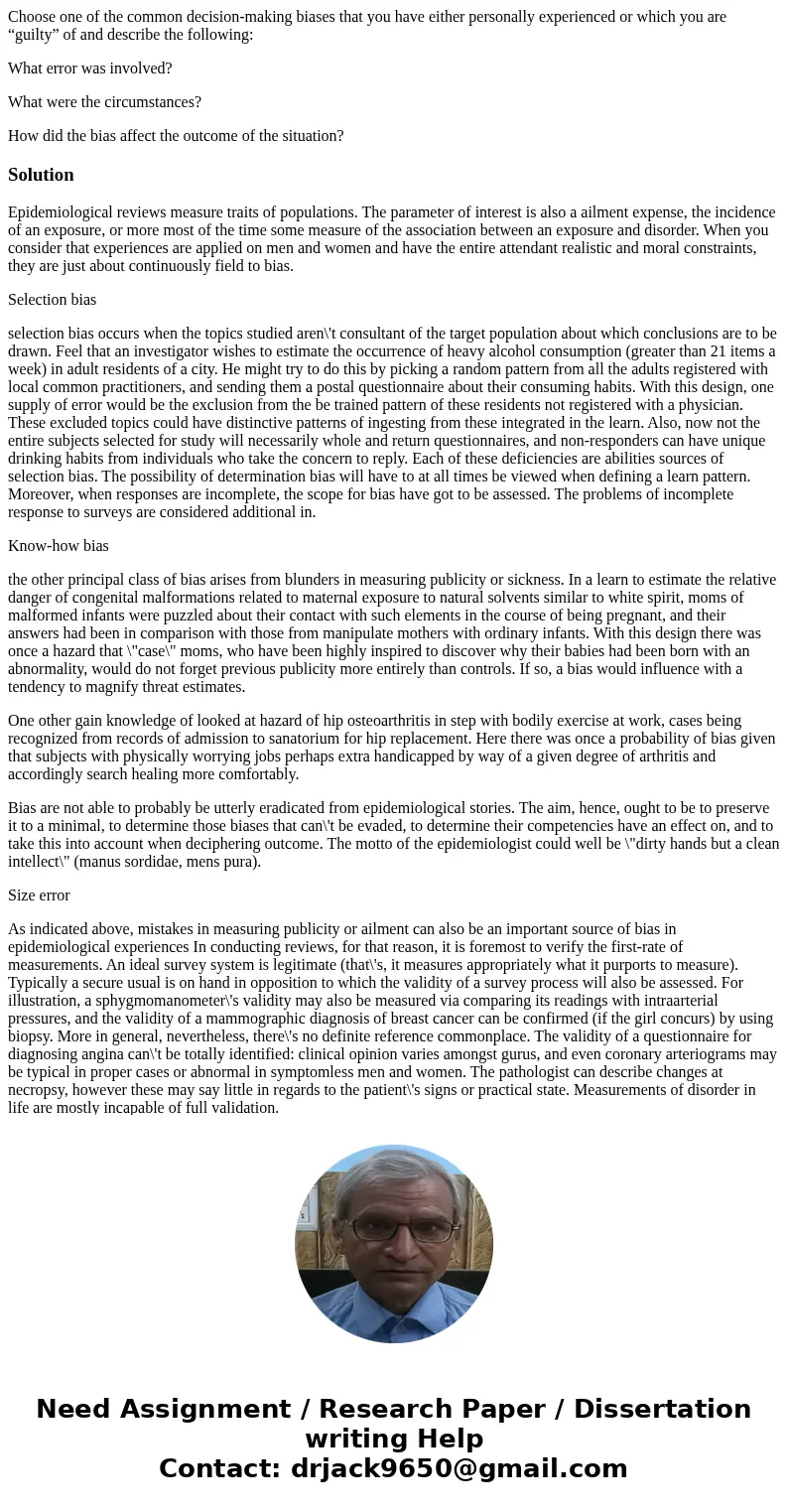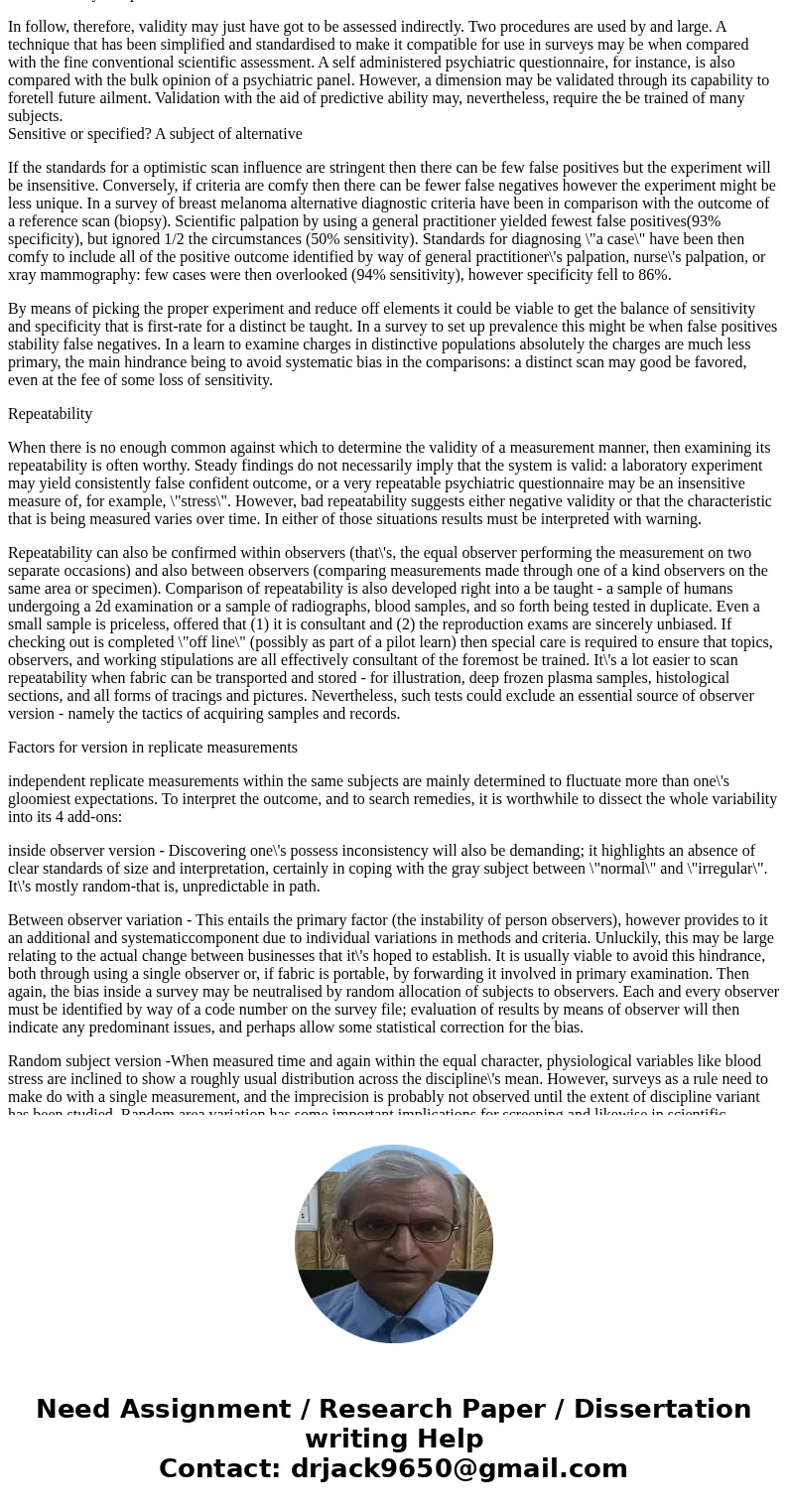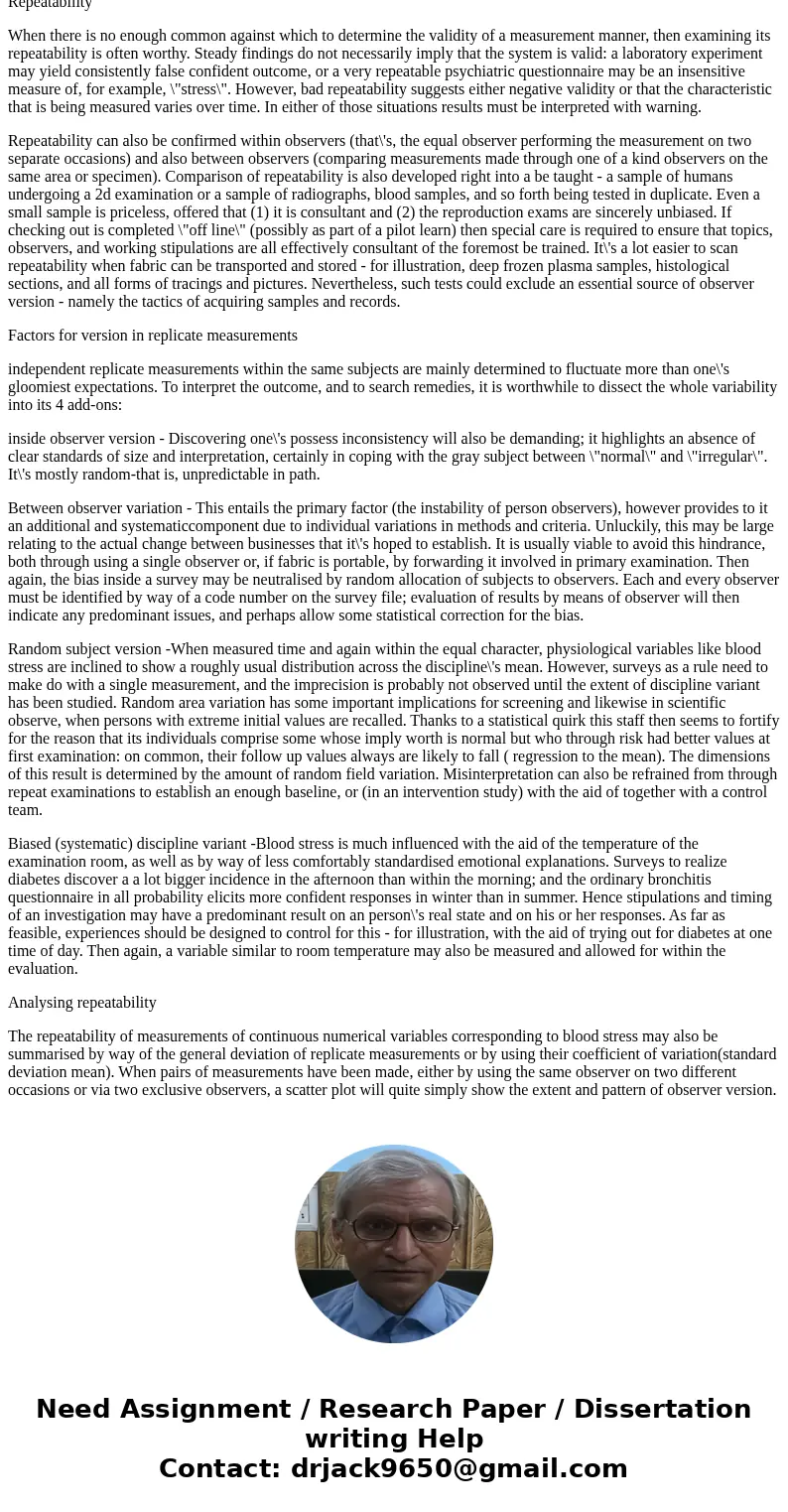Choose one of the common decisionmaking biases that you have
Choose one of the common decision-making biases that you have either personally experienced or which you are “guilty” of and describe the following:
What error was involved?
What were the circumstances?
How did the bias affect the outcome of the situation?
Solution
Epidemiological reviews measure traits of populations. The parameter of interest is also a ailment expense, the incidence of an exposure, or more most of the time some measure of the association between an exposure and disorder. When you consider that experiences are applied on men and women and have the entire attendant realistic and moral constraints, they are just about continuously field to bias.
Selection bias
selection bias occurs when the topics studied aren\'t consultant of the target population about which conclusions are to be drawn. Feel that an investigator wishes to estimate the occurrence of heavy alcohol consumption (greater than 21 items a week) in adult residents of a city. He might try to do this by picking a random pattern from all the adults registered with local common practitioners, and sending them a postal questionnaire about their consuming habits. With this design, one supply of error would be the exclusion from the be trained pattern of these residents not registered with a physician. These excluded topics could have distinctive patterns of ingesting from these integrated in the learn. Also, now not the entire subjects selected for study will necessarily whole and return questionnaires, and non-responders can have unique drinking habits from individuals who take the concern to reply. Each of these deficiencies are abilities sources of selection bias. The possibility of determination bias will have to at all times be viewed when defining a learn pattern. Moreover, when responses are incomplete, the scope for bias have got to be assessed. The problems of incomplete response to surveys are considered additional in.
Know-how bias
the other principal class of bias arises from blunders in measuring publicity or sickness. In a learn to estimate the relative danger of congenital malformations related to maternal exposure to natural solvents similar to white spirit, moms of malformed infants were puzzled about their contact with such elements in the course of being pregnant, and their answers had been in comparison with those from manipulate mothers with ordinary infants. With this design there was once a hazard that \"case\" moms, who have been highly inspired to discover why their babies had been born with an abnormality, would do not forget previous publicity more entirely than controls. If so, a bias would influence with a tendency to magnify threat estimates.
One other gain knowledge of looked at hazard of hip osteoarthritis in step with bodily exercise at work, cases being recognized from records of admission to sanatorium for hip replacement. Here there was once a probability of bias given that subjects with physically worrying jobs perhaps extra handicapped by way of a given degree of arthritis and accordingly search healing more comfortably.
Bias are not able to probably be utterly eradicated from epidemiological stories. The aim, hence, ought to be to preserve it to a minimal, to determine those biases that can\'t be evaded, to determine their competencies have an effect on, and to take this into account when deciphering outcome. The motto of the epidemiologist could well be \"dirty hands but a clean intellect\" (manus sordidae, mens pura).
Size error
As indicated above, mistakes in measuring publicity or ailment can also be an important source of bias in epidemiological experiences In conducting reviews, for that reason, it is foremost to verify the first-rate of measurements. An ideal survey system is legitimate (that\'s, it measures appropriately what it purports to measure). Typically a secure usual is on hand in opposition to which the validity of a survey process will also be assessed. For illustration, a sphygmomanometer\'s validity may also be measured via comparing its readings with intraarterial pressures, and the validity of a mammographic diagnosis of breast cancer can be confirmed (if the girl concurs) by using biopsy. More in general, nevertheless, there\'s no definite reference commonplace. The validity of a questionnaire for diagnosing angina can\'t be totally identified: clinical opinion varies amongst gurus, and even coronary arteriograms may be typical in proper cases or abnormal in symptomless men and women. The pathologist can describe changes at necropsy, however these may say little in regards to the patient\'s signs or practical state. Measurements of disorder in life are mostly incapable of full validation.
In follow, therefore, validity may just have got to be assessed indirectly. Two procedures are used by and large. A technique that has been simplified and standardised to make it compatible for use in surveys may be when compared with the fine conventional scientific assessment. A self administered psychiatric questionnaire, for instance, is also compared with the bulk opinion of a psychiatric panel. However, a dimension may be validated through its capability to foretell future ailment. Validation with the aid of predictive ability may, nevertheless, require the be trained of many subjects.
Sensitive or specified? A subject of alternative
If the standards for a optimistic scan influence are stringent then there can be few false positives but the experiment will be insensitive. Conversely, if criteria are comfy then there can be fewer false negatives however the experiment might be less unique. In a survey of breast melanoma alternative diagnostic criteria have been in comparison with the outcome of a reference scan (biopsy). Scientific palpation by using a general practitioner yielded fewest false positives(93% specificity), but ignored 1/2 the circumstances (50% sensitivity). Standards for diagnosing \"a case\" have been then comfy to include all of the positive outcome identified by way of general practitioner\'s palpation, nurse\'s palpation, or xray mammography: few cases were then overlooked (94% sensitivity), however specificity fell to 86%.
By means of picking the proper experiment and reduce off elements it could be viable to get the balance of sensitivity and specificity that is first-rate for a distinct be taught. In a survey to set up prevalence this might be when false positives stability false negatives. In a learn to examine charges in distinctive populations absolutely the charges are much less primary, the main hindrance being to avoid systematic bias in the comparisons: a distinct scan may good be favored, even at the fee of some loss of sensitivity.
Repeatability
When there is no enough common against which to determine the validity of a measurement manner, then examining its repeatability is often worthy. Steady findings do not necessarily imply that the system is valid: a laboratory experiment may yield consistently false confident outcome, or a very repeatable psychiatric questionnaire may be an insensitive measure of, for example, \"stress\". However, bad repeatability suggests either negative validity or that the characteristic that is being measured varies over time. In either of those situations results must be interpreted with warning.
Repeatability can also be confirmed within observers (that\'s, the equal observer performing the measurement on two separate occasions) and also between observers (comparing measurements made through one of a kind observers on the same area or specimen). Comparison of repeatability is also developed right into a be taught - a sample of humans undergoing a 2d examination or a sample of radiographs, blood samples, and so forth being tested in duplicate. Even a small sample is priceless, offered that (1) it is consultant and (2) the reproduction exams are sincerely unbiased. If checking out is completed \"off line\" (possibly as part of a pilot learn) then special care is required to ensure that topics, observers, and working stipulations are all effectively consultant of the foremost be trained. It\'s a lot easier to scan repeatability when fabric can be transported and stored - for illustration, deep frozen plasma samples, histological sections, and all forms of tracings and pictures. Nevertheless, such tests could exclude an essential source of observer version - namely the tactics of acquiring samples and records.
Factors for version in replicate measurements
independent replicate measurements within the same subjects are mainly determined to fluctuate more than one\'s gloomiest expectations. To interpret the outcome, and to search remedies, it is worthwhile to dissect the whole variability into its 4 add-ons:
inside observer version - Discovering one\'s possess inconsistency will also be demanding; it highlights an absence of clear standards of size and interpretation, certainly in coping with the gray subject between \"normal\" and \"irregular\". It\'s mostly random-that is, unpredictable in path.
Between observer variation - This entails the primary factor (the instability of person observers), however provides to it an additional and systematiccomponent due to individual variations in methods and criteria. Unluckily, this may be large relating to the actual change between businesses that it\'s hoped to establish. It is usually viable to avoid this hindrance, both through using a single observer or, if fabric is portable, by forwarding it involved in primary examination. Then again, the bias inside a survey may be neutralised by random allocation of subjects to observers. Each and every observer must be identified by way of a code number on the survey file; evaluation of results by means of observer will then indicate any predominant issues, and perhaps allow some statistical correction for the bias.
Random subject version -When measured time and again within the equal character, physiological variables like blood stress are inclined to show a roughly usual distribution across the discipline\'s mean. However, surveys as a rule need to make do with a single measurement, and the imprecision is probably not observed until the extent of discipline variant has been studied. Random area variation has some important implications for screening and likewise in scientific observe, when persons with extreme initial values are recalled. Thanks to a statistical quirk this staff then seems to fortify for the reason that its individuals comprise some whose imply worth is normal but who through risk had better values at first examination: on common, their follow up values always are likely to fall ( regression to the mean). The dimensions of this result is determined by the amount of random field variation. Misinterpretation can also be refrained from through repeat examinations to establish an enough baseline, or (in an intervention study) with the aid of together with a control team.
Biased (systematic) discipline variant -Blood stress is much influenced with the aid of the temperature of the examination room, as well as by way of less comfortably standardised emotional explanations. Surveys to realize diabetes discover a a lot bigger incidence in the afternoon than within the morning; and the ordinary bronchitis questionnaire in all probability elicits more confident responses in winter than in summer. Hence stipulations and timing of an investigation may have a predominant result on an person\'s real state and on his or her responses. As far as feasible, experiences should be designed to control for this - for illustration, with the aid of trying out for diabetes at one time of day. Then again, a variable similar to room temperature may also be measured and allowed for within the evaluation.
Analysing repeatability
The repeatability of measurements of continuous numerical variables corresponding to blood stress may also be summarised by way of the general deviation of replicate measurements or by using their coefficient of variation(standard deviation mean). When pairs of measurements have been made, either by using the same observer on two different occasions or via two exclusive observers, a scatter plot will quite simply show the extent and pattern of observer version.



 Homework Sourse
Homework Sourse